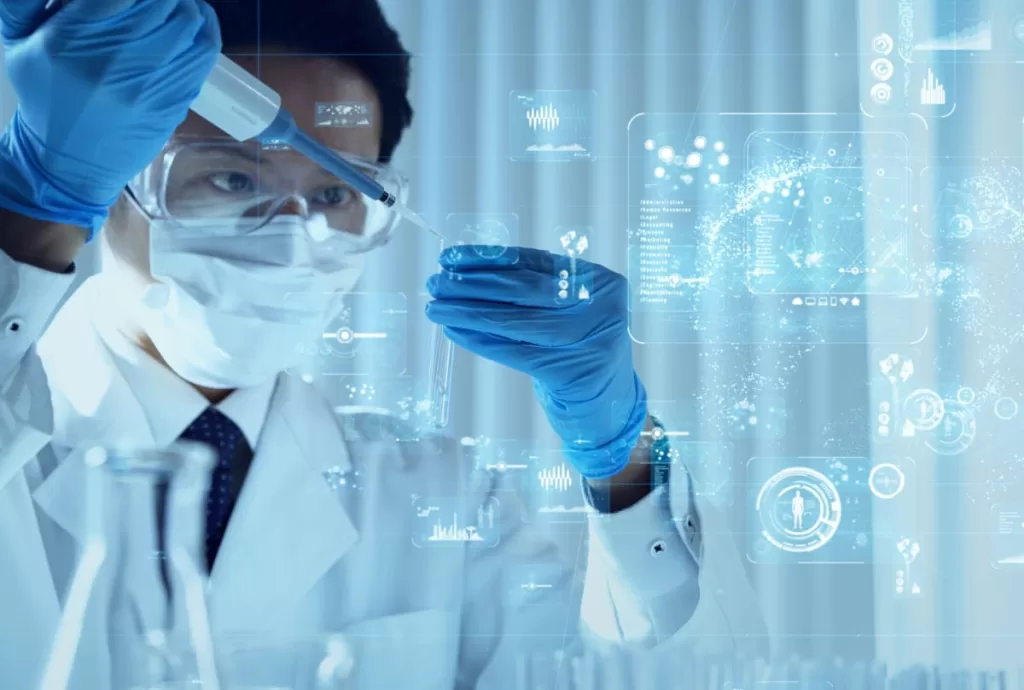
Introduction: Why AI Matters in Metabolomics
Metabolomics, the science of studying small molecules in biological systems, has become one of our most powerful tools for understanding human health, disease mechanisms, and how our microbiomes (the collections of trillions of microbes in our bodies) work. But here’s the thing: as datasets grow larger and biological signals get more complex, artificial intelligence isn’t just helpful anymore. It’s absolutely essential.
We Recently Co-Authored a Landmark Review
At Arome Science, we’re excited to contribute to the growing knowledge in this field. Our co- founders recently wrote a scientific review called “Metabolomics in the Era of Artificial Intelligence“1 published in Microbiota and Host. The article dives into how AI tools are already changing every part of a metabolomics workflow—from how we design experiments to how we harmonize data, annotate results, and generate new knowledge.
Here’s What the Article Covers, And Why It Matters
1. AI for Smart Experimental Design
AI may soon actually help researchers figure out the best way to run a metabolomics experiment. Instead of just using default LC-MS settings, algorithms can suggest different approaches (like HILIC chromatography in negative mode) based on which metabolites you’re targeting. This means researchers can better target biologically important molecules they are interested in.
2. Better Data Processing with Machine Learning
Rather than manually tweaking parameters, AI tools like MSHub can detect the optimal settings by learning directly from the data structure. This improves reproducibility and cuts down on human error, especially important in complex datasets where small mistakes in setting parameters can completely throw off your interpretation.
3. Correcting for Batch Effects and Instrument Drift
AI-driven algorithms like ComBat and Mutual Nearest Neighbors (MNN) can correct for variations caused by experimental conditions, making it much easier to spot the real biological signals. These approaches are already pretty well-developed, though future models will likely handle even more extreme technical variation and cross-platform integration.
4. Annotating the Unknown: Shedding Light on Metabolomics “Dark Matter”
This is where AI really shines in tackling one of metabolomics’ biggest challenges: identifying all those unknown molecules we detect in LC-MS and GC-MS experiments. Tools like Sirius, Spec2Vec, and MS2Mol help predict molecular structures and classify compounds, including ones that aren’t even in traditional spectral libraries.
5. Integrating Multi-Omics Data
AI makes it possible to meaningfully combine metabolomics with microbiome, transcriptomic, and proteomic data. Tools like MMvec use co-occurrence patterns—borrowed from language models like word2vec—to connect specific metabolites with microbial taxa. This opens up powerful functional interpretations that go way beyond simple correlation analysis.
6. Toward AI-Powered Knowledge Systems
One of the most exciting aspects of the article is its vision of dynamic, AI-updated knowledge systems. Instead of publishing static papers, future research findings could feed directly into continuously learning algorithms. AI might eventually become a true collaborative scientific partner, helping identify new hypotheses, design experiments, and interpret results in context.
Why This Matters for Your Work
At Arome Science, we’re already putting many of these concepts to work in real projects:
- Advanced MS analysis pipelines that are optimized by AI
- Semi-targeted panels that combine high-confidence biomarkers with untargeted exploration
- Custom microbial-metabolite mapping for both diagnostics and discovery
The result? Faster insights, better reproducibility, and deeper understanding – whether you’re working in pharmaceuticals, personalized medicine, nutrition, or academic research.
Final Thoughts: The AI-Powered Future Is Here
Metabolomics is evolving at breakneck speed, and artificial intelligence is driving that transformation. By combining cutting-edge machine learning with deep domain expertise, Arome Science is working to set a new standard in analytical science and data-driven discovery.
Curious about how AI can supercharge your metabolomics research? Get in touch with us.

